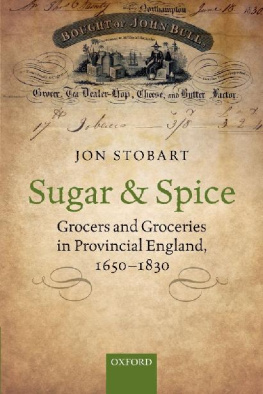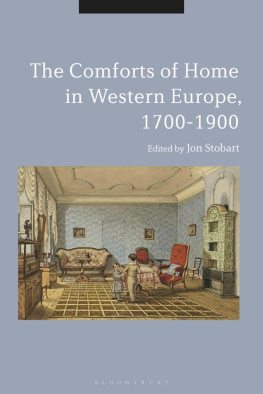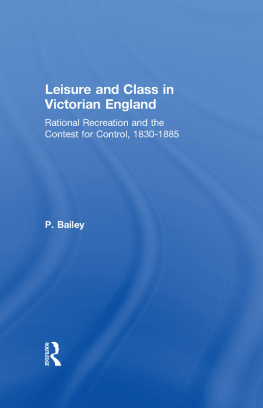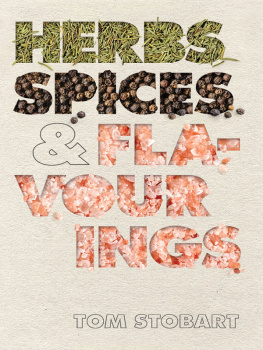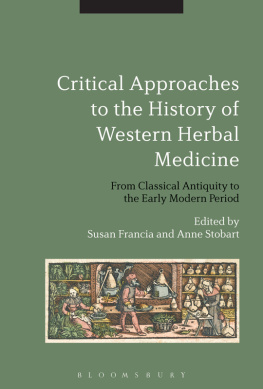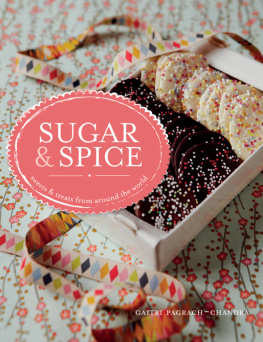SUGAR AND SPICE
ABOUT THE AUTHOR
Jon Stobart is Professor of History at Manchester Metropolitan University. He has published widely on the history of consumption, retailing, and leisure in eighteenth-century England, and has a particular interest in the spatiality of consumption and the marketing of goods. His recent publications include Selling Textiles in the Long Eighteenth Century (2014), co-edited with Bruno Blonde, The Country House: Material Culture and Consumption (2015), co-edited with Andrew Hann, and Consumption and the Country House (2016), co-authored with Mark Rothery.
Sugar and Spice
Grocers and Groceries in Provincial England, 16501830
JON STOBART
Great Clarendon Street, Oxford, OX2 6DP,
United Kingdom
Oxford University Press is a department of the University of Oxford. It furthers the Universitys objective of excellence in research, scholarship, and education by publishing worldwide. Oxford is a registered trade mark of Oxford University Press in the UK and in certain other countries
Jon Stobart 2013
The moral rights of the author have been asserted
First published 2013
First published in paperback 2016
All rights reserved. No part of this publication may be reproduced, stored in a retrieval system, or transmitted, in any form or by any means, without the prior permission in writing of Oxford University Press, or as expressly permitted by law, by licence or under terms agreed with the appropriate reprographics rights organization. Enquiries concerning reproduction outside the scope of the above should be sent to the Rights Department, Oxford University Press, at the address above
You must not circulate this work in any other form and you must impose this same condition on any acquirer
Published in the United States of America by Oxford University Press
198 Madison Avenue, New York, NY 10016, United States of America
British Library Cataloguing in Publication Data
Data available
Library of Congress Cataloging in Publication Data
Data available
ISBN 9780199577927 (Hbk.)
ISBN 9780198795964 (Pbk.)
eISBN 9780192515629
Links to third party websites are provided by Oxford in good faith and for information only. Oxford disclaims any responsibility for the materials contained in any third party website referenced in this work.
For Jane
Acknowledgements
There are many people and organizations that have assisted in the research and production of this book. Grants from the Leverhulme Trust and the AHRC have made possible much of the archival work for this project, and I am grateful for their support. Undertaking this work would have been impossible without the assistance of archivists and search-room staff in a large number of places: the record offices in Bedford, Chester, Hanley, Lichfield, Maidstone, Northampton, Norwich, Oxford, Preston, Shrewsbury, Stafford, Stratford-upon-Avon, Truro, Warwick, York, and at the British Library, the Central Library in Manchester, the John Rylands Library, Northamptonshire Central Library, and The National Archives. I would like to thank Lucy Bailey, Amy Barnett, and Andrew Hann for generously making available some of their data and thus enriching various sections of the book. Thanks also to the following for permission to reproduce images: the Bodleian Library, University of Oxford, John Johnson Collection; the Cheshire Archives and Local Studies; the Norfolk Library and Information Service, and Northamptonshire Central Library.
There are numerous colleagues who have helped to refine my thinking about groceries, retailing, consumption, and material culture. These include the organizers and participants at a wide range of conferences and seminars in Amsterdam, Antwerp, Berlin, Cambridge, Exeter, Ghent, Jyvaskyla, Leeds, Leicester, Lisbon, Liverpool, London, Lyon, Northampton, Nottingham, Oxford, Paris, Rouen, Telford, Warwick, and Wolverhampton. Particular thanks go to Amy Barnett, Bruno Blond, Nancy Cox, Sheryllynne Haggerty, Ian Mitchell, Mark Rothery, and Sara Pennell for reading drafts and talking about groceries and grocers. They encouraged me to think broadly and to be rigorous in my analysis. The quality of the final text owes much to the care and attention of Hilary Walford and Andrew Hawkey, who helped to correct my grammatical, typographical, and presentational errors. Finally, thanks to my family, who have, more or less convincingly, shown an interest in the grocery trade of eighteenth-century England. They have been very patient.
Contents
Whilst every effort has been made to secure permissions, we may have failed in a few cases to trace the copyright holders. We apologize for any apparent negligence. Should the copyright holders wish to contact us after publication, we would be happy to include an acknowledgement in subsequent reprints.
| BL | British Library |
| BLA | Bedfordshire and Luton Archive |
| BM | British Museum |
| Bodl., JJC | Bodleian Library, University of Oxford, John Johnson Collection |
| CALS | Cheshire Archives and Local Studies |
| CRO | Cornwall Record Office |
| HRL | Hanley Reference Library |
| JRL | John Rylands Library |
| KAS | Kent Archive Services |
| LiRO | Lichfield Record Office |
| LMA | London Metropolitan Archives |
| LRO | Lancashire Record Office |
| MCL | Manchester Central Library |
| NCL | Northamptonshire Central Library |
| NLIS | Norfolk Library and Information Service |
| NoRO | Norfolk Record Office |
| NRO | Northamptonshire Record Office |
| OBP | Old Bailey Papers |
| ORO | Oxfordshire Record Office |
| SA | Shropshire Archives |
| SCLA | Shakespeare Central Library and Archive |
| TNA | The National Archives |
| WRO | Warwickshire County Record Office |
| WSL | William Salt Library |
In May 1742, the Norwich grocer Robert Baret advertised a range of teas recently acquired at the East India Company sales, along with coffee, chocolate, sago, capers, anchovies, and spirits. Around the same time, Molly Brooks was buying tea, sugar, fruit, spices, nuts, and chocolate from the Worcester grocer Thomas Dickenson. Indeed, the combined attention of economic, social, and cultural historians has placed onto imported groceries an enormous weight of conceptual, historical, and empirical significance. Few have stopped to consider whether these goods can really carry such a heavy explanatory load or to think about the everyday practicalities of selling, buying, and consuming sugar, tea, spices, or tobacco. This book attempts to do both of these thingsand more. The explicit focus is the character and development of the grocery trade in provincial England between the spread of new exotic goods in the mid-seventeenth century and the emergence of Co-Operative Society stores and multiples in the middle decades of the nineteenth century. In tracing the lines of supply that carried groceries from merchants through retailers to consumers, I demonstrate how changes in retailing and shopping were central to the broader transformation of consumption and consumer practices.

